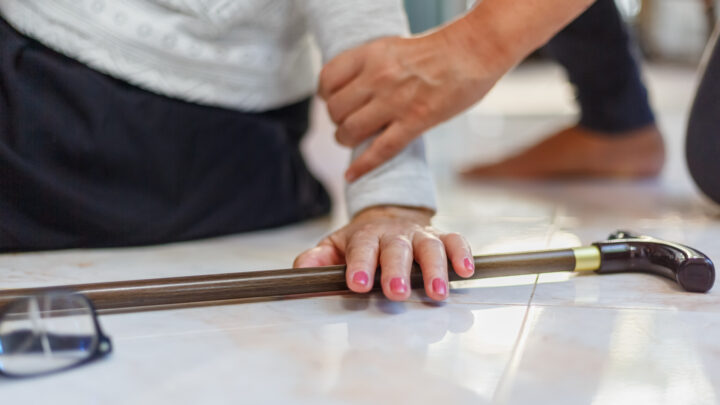
Senior woman falling down at home because stumbled on a door kerb
When it comes to preventing falls later in life, there are plenty of well-known strategies — from staying active to making homes safer with handrails and better lighting. However, a recent international study led by Neuroscience Research Australia (NeuRA) has found that one powerful predictor of future falls is less visible: the fear of falling itself.
The systematic review and meta-analysis were led by Professor Kim Delbaere, Senior Research Scientist and Director of Innovation and Translation at NeuRA’s Falls, Balance and Injury Research Centre. Working alongside the World Falls Guidelines group, the research confirms that worrying about falling independently increases a person’s risk of actually falling.
Study Findings Highlight Psychological Impact
The findings are based on an analysis of 53 studies involving more than 75,000 participants worldwide. The results showed that older adults with high levels of concern about falling were significantly more likely to experience a fall — even when other key risk factors such as age, previous falls, and balance impairments were taken into account.
“Many older Australians develop concerns about falling, and this concern itself increases their risk of future falls,” Prof Delbaere said.
Professor Delbaere emphasized that while prior falls are known to be a risk factor for developing concerns about falling, the research indicates that the fear can be both a cause and consequence of falls. This highlights the psychological impact of fear as a significant factor in fall risk.
Implications for Prevention Strategies
Now that fear of falling is known to increase the risk, it’s crucial to take it into account when planning prevention measures. The first step in prevention is starting the conversation. Many older adults don’t talk about their concerns unless asked, yet these concerns are real and can increase their risk of falling.
“By routinely discussing concerns about falling, healthcare professionals, families and caregivers can help older adults take early action to stay active and independent,” Prof Delbaere said.
After identifying concerns about falling, it is important to support people with targeted, multidisciplinary interventions such as exercise, cognitive behavioural therapy, and occupational therapy, to help reduce their risk of falls.
Broader Impacts on Quality of Life
Concerns about falling are highly prevalent in older adults, affecting nearly 1 in 2 people by age 85. They have been linked to reduced quality of life and independence, poor rehabilitation outcomes, and increased risk of frailty, disability, and admission to care homes.
Falls are not an inevitable part of ageing – they are preventable. With strong evidence showing up to 30% of falls are preventable, it’s time for Australia to invest in a coordinated national strategy and make falls prevention a public health priority, not an afterthought.
Looking Ahead: A Call for Action
The move towards recognizing the psychological aspects of fall prevention represents a significant shift in public health strategy. By identifying concerns about falling and other risk factors early and providing the right interventions, we can help older adults stay active, independent, and confident in their mobility, ultimately improving their quality of life.
As Australia considers its next steps, the findings from NeuRA’s study serve as a call to action for policymakers, healthcare providers, and communities to address this often-overlooked aspect of ageing. By doing so, they can help ensure that older Australians live safer, healthier lives.
IMPORTANT LEGAL INFO: This article is of a general nature and FYI only, because it doesn’t take into account your personal health requirements or existing medical conditions. That means it’s not personalised health advice and shouldn’t be relied upon as if it is. Before making a health-related decision, you should work out if the info is appropriate for your situation and get professional medical advice.






